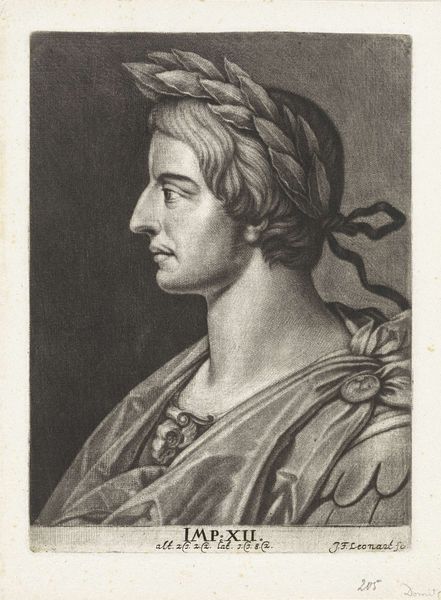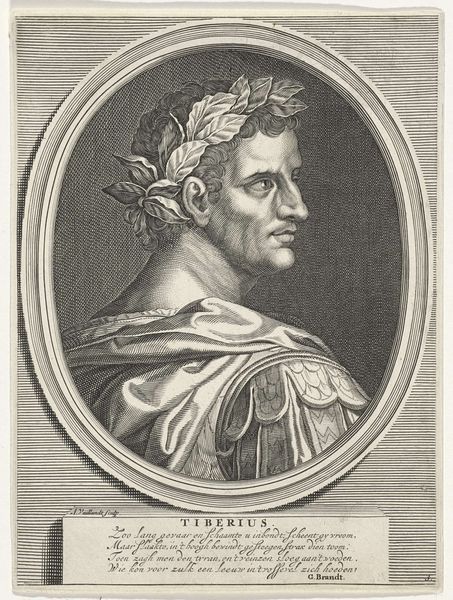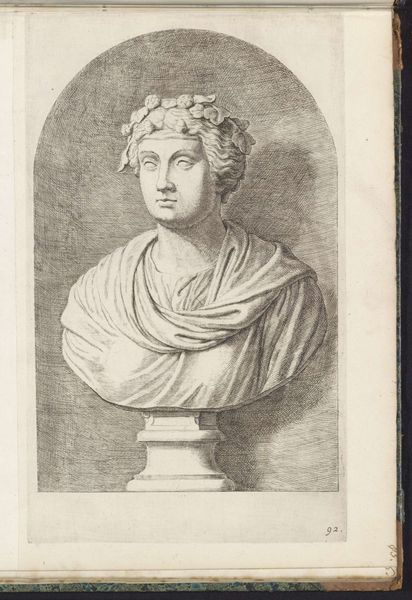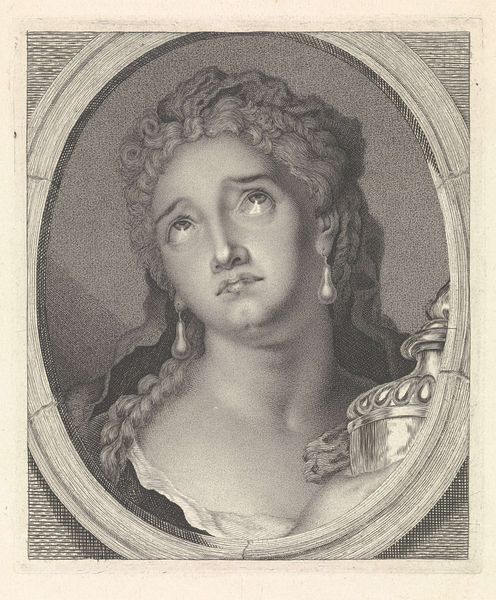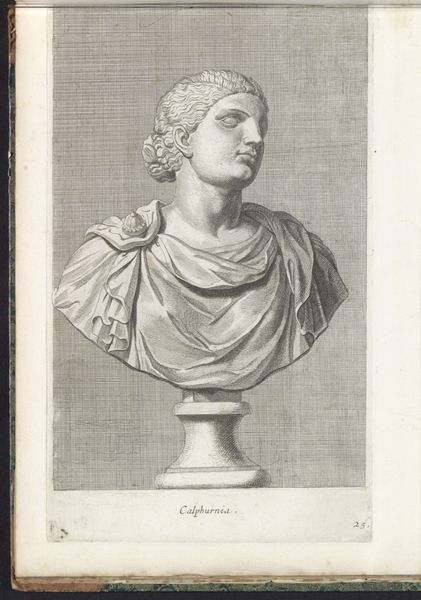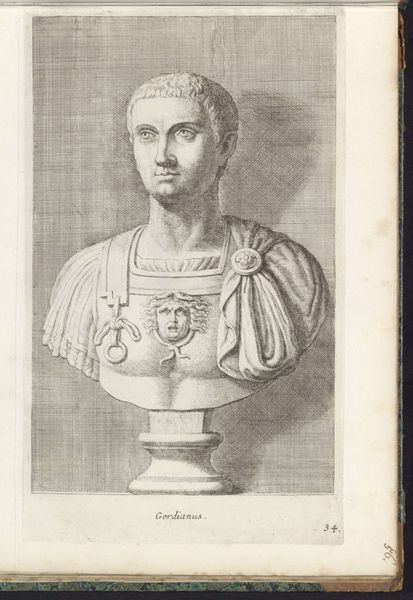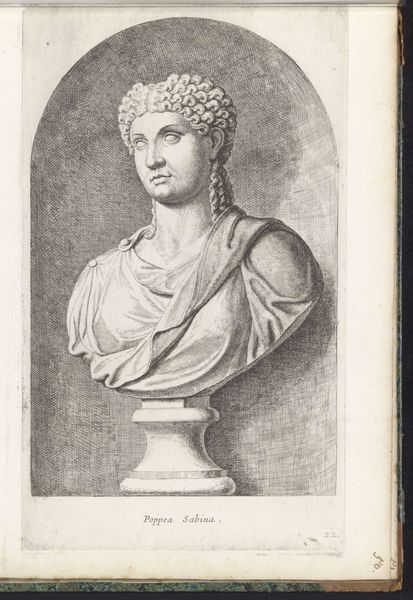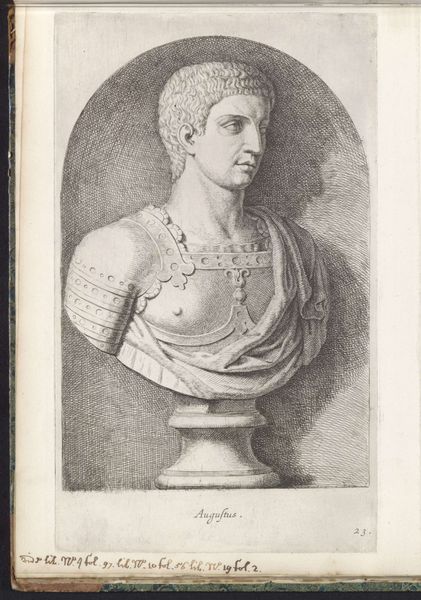
#
pencil drawn
#
facial expression drawing
#
light pencil work
#
pencil sketch
#
caricature
#
portrait reference
#
pencil drawing
#
limited contrast and shading
#
portrait drawing
#
pencil work
Dimensions: height 169 mm, width 122 mm
Copyright: Rijks Museum: Open Domain
Curator: This is a piece called "Portret van keizer Otho" or "Portrait of Emperor Otho" by Johann Friedrich Leonard, created sometime between 1643 and 1680. The work is pencil on paper. What's your initial reaction? Editor: The tonality strikes me immediately—a study in grays, masterfully achieved through subtle variations in shading. It conveys a powerful sense of gravitas. The laurel wreath and classical drapery frame the face beautifully. Curator: Indeed, and I find it compelling to consider Otho within the narratives of power and legitimacy. He ruled for only three months, a turbulent period marked by political intrigue and civil war. This portrait, created long after his death, becomes an interesting attempt at legacy-making. What does the artist want us to remember, given the complicated nature of Otho’s brief reign? Editor: That’s a fascinating point. Looking at the linear precision, the meticulous rendering of textures in his drapery, and the calculated angle of the head, one recognizes an attempt at idealization. Semiotically, the laurel wreath is not simply decorative, it's a deliberate symbol of authority and victory. The gaze directed slightly upwards gives the artwork an intentional meaning of glory, power and superiority. Curator: I agree. However, considering the political instability of the 17th century, these types of classical symbols, as displayed in portraiture of the time, were very important. These symbolic items may have served the function of asserting authority in a changing socio-political landscape. What can we learn by interpreting them and comparing them to similar portraits of prominent leaders across Europe? Editor: Certainly. Through comparative formal analysis, one sees consistent strategic manipulation of form. This work has sharp detailed line work that communicates the authority and power the subject in this artpiece carries. These methods contribute significantly to constructing the viewer’s perception and interpretation of Otho. Curator: And what I see through an intersectional analysis is a commentary on power itself. It makes me think about the burdens of leadership in the midst of extreme conflict, and what making sacrifices for leadership means. Editor: Absolutely. These careful aesthetic decisions have broader cultural, political and emotional meanings. It’s always enriching to revisit these works, recognizing their artistic strategies and the ongoing dialogues they elicit.
Comments
No comments
Be the first to comment and join the conversation on the ultimate creative platform.

